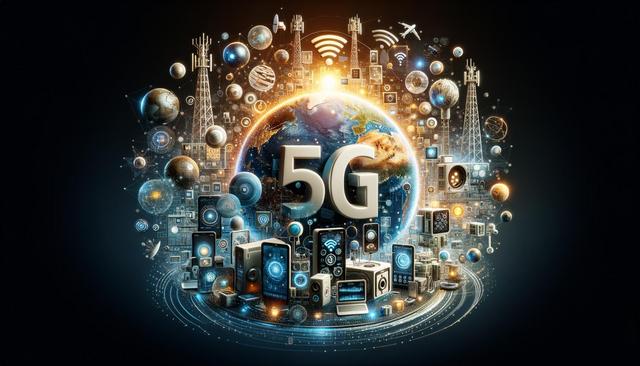Understanding 5G: How the New Internet Era Impacts Your Life
5G is here and it’s fast. Learn what 5G means for your phone, home, and work life. From speed boosts to smart tech, find out why 5G is the next big leap in how we stay connected.

What is 5G and How Does It Work?
5G, or fifth-generation wireless technology, is the latest advancement in mobile network infrastructure. It builds upon the previous generations of connectivity by offering faster speeds, lower latency, and the ability to connect more devices at once. Unlike its predecessors, 5G uses higher frequency bands known as millimeter waves, which can carry more data but have a shorter range. To overcome this, 5G networks rely on a dense infrastructure of small cells and advanced technologies like beamforming and massive MIMO (multiple input, multiple output).
These innovations enable 5G to support a wide variety of applications beyond just mobile phones. For instance, 5G can deliver real-time data transmission that supports everything from autonomous vehicles to remote surgery. Here’s a quick comparison of 5G vs. previous generations:
- Speed: 5G can reach up to 10 Gbps, far faster than 4G LTE.
- Latency: Reduced to as low as 1 millisecond, compared to 50ms for 4G.
- Capacity: Supports up to 1 million devices per square kilometer.
As 5G continues to roll out globally, understanding its technical foundation helps consumers grasp the potential transformations it may bring.
5G and Mobile Devices: What to Expect
One of the most immediate and noticeable impacts of 5G is on smartphones and other mobile devices. Consumers can expect faster downloads, smoother video streaming, and more responsive mobile apps. For those who rely on mobile devices for work or entertainment, 5G opens up new possibilities for productivity and immersive experiences.
Some key enhancements for mobile users include:
- High-definition video calls with minimal lag
- Improved gaming experiences with reduced latency
- Instant app updates and file transfers
However, to benefit from 5G, users need compatible devices. Most newer smartphones are now equipped with 5G capabilities, but older models will continue to operate on 4G networks. Additionally, 5G performance can vary based on location, as coverage is still expanding in many regions. Urban centers typically see faster rollouts, while rural areas may experience delays in infrastructure development.
As more 5G-ready devices enter the market and coverage improves, users will begin to experience the full impact of this technology in their daily digital interactions.
5G at Home: A New Way to Connect
5G isn’t just for mobile phones—it’s also reshaping home internet connectivity. With 5G home internet services emerging, households can now access high-speed broadband without the need for traditional wired connections. This is particularly beneficial in areas where fiber-optic infrastructure is limited or unavailable.
Benefits of 5G home internet include:
- Quick and simple installation without cables
- High-speed connections suitable for streaming, gaming, and remote work
- Increased competition among internet providers, potentially lowering prices
5G can also enhance smart home technologies by providing reliable, fast connections for multiple devices. From smart thermostats to connected security systems, a 5G-powered home can handle more data-heavy tasks with ease. However, as with mobile, signal strength and availability can vary, especially in areas with limited 5G infrastructure.
Despite these limitations, the convenience and performance of 5G at home make it an appealing alternative or complement to traditional broadband services.
Transforming Industries with 5G
Beyond personal use, 5G is set to transform a wide range of industries. From manufacturing and healthcare to transportation and agriculture, the ultra-low latency and high bandwidth of 5G allow for real-time data exchange and automation on a new level.
Examples of 5G applications in industry include:
- Remote surgeries and telemedicine in healthcare
- Smart factories with automated machinery and real-time monitoring
- Connected vehicles and traffic systems in transportation
- Precision farming using data from sensors and drones
These advancements not only improve efficiency but also open up new business models and services. For instance, augmented reality (AR) and virtual reality (VR) applications rely heavily on fast and stable connections, which 5G supports more effectively than previous networks.
As businesses adopt 5G, they will need to invest in compatible technology and adapt their operations to take full advantage of what 5G offers. This transition will likely be gradual, but the long-term potential is significant.
The Future of 5G: What Lies Ahead
5G is still in its early stages, and its full potential is yet to be realized. As networks expand and technology matures, we can expect even more innovative applications and services built around this new standard. One area of growth will be the integration of artificial intelligence (AI) and machine learning with 5G, enabling smarter decision-making and automation.
Future trends may include:
- Increased use of 5G in public infrastructure and smart cities
- Expanded ultrafast connectivity in remote and underserved areas
- Enhanced mobile and virtual experiences through AR and VR platforms
Regulatory and security challenges will also need to be addressed to ensure safe and equitable access to 5G networks. Governments and private companies are working together to tackle these issues and promote widespread adoption.
Ultimately, the future of 5G will be defined by how effectively it integrates with other emerging technologies to shape a more connected, efficient, and intelligent world.
Conclusion: Embracing the 5G Era
As 5G continues to roll out, individuals and businesses alike stand to benefit from its enhanced capabilities. Whether you’re upgrading your smartphone, improving your home network, or exploring new business solutions, 5G offers a flexible and powerful platform for innovation. Staying informed about its developments and understanding how it fits into your digital life will help you make the most of what this new era of connectivity has to offer.